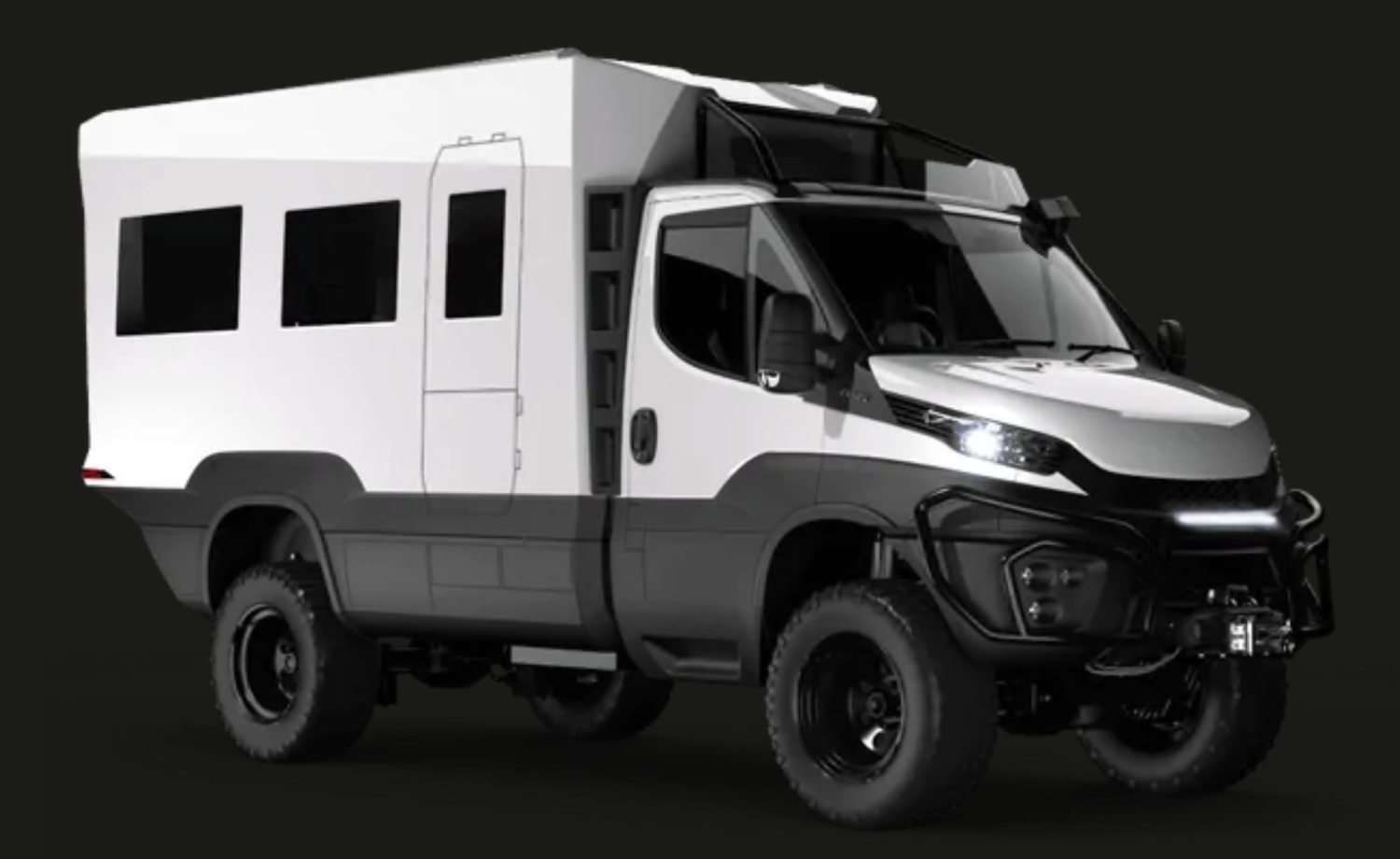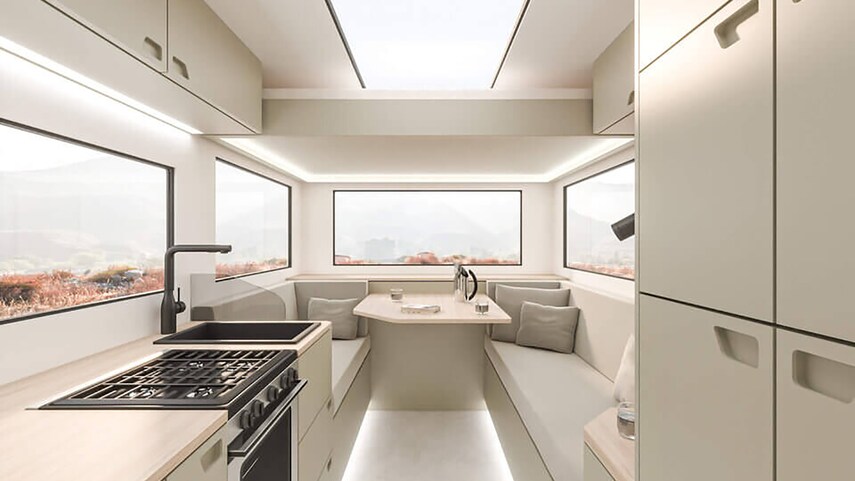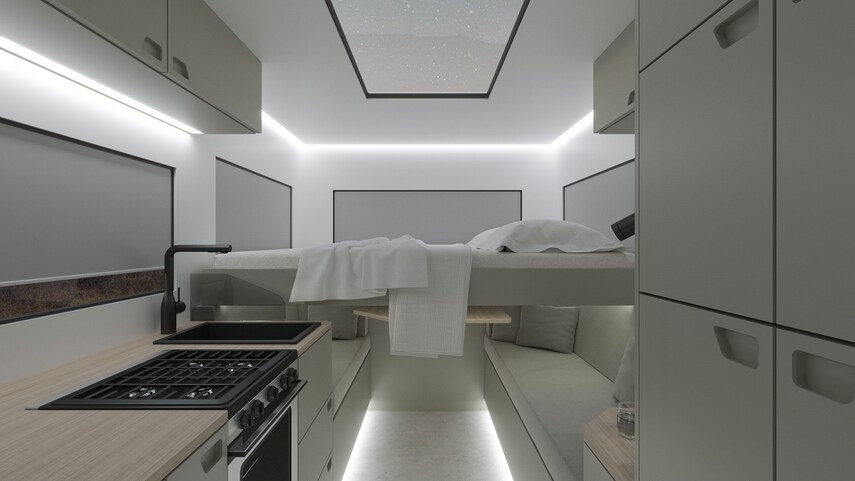The Darc Mono is billed as the ultimate expedition vehicle, but what exactly makes this new monocoque carbon-fiber globetrotter stand out from the rest? And is it deserving of its self-proclaimed title? Having seen a flurry of recent web coverage, I decided to dig into the Darc website and see what I could discover.
The Darc Mono At a Glance
I’m not surprised to see the recent explosion of expedition vehicles with carbon-fiber habitats hitting the market lately, and that’s due to two factors. Primarily, the overland and campervan markets are booming, with many builders booked out a year or more, so you could say that demand is currently high. Secondly, as a maturing recreational market segment, we’re seeing more builders taking chances with advanced materials and consumers who are willing to meet them at their high price-points.
Darc Mono joins the ranks of Truckhouse, Nimbl Vehicles, and EarthRoamer, (to name a few), who are offering composite monocoque expedition vehicles. If you’re not entirely sure what a monocoque body is, don’t worry, I didn’t either.
Basically, monocoque means single skin. With monocoque vehicle designs, the entirety of the body (in this case, the habitat) lends itself to the overall structural integrity. This means that all parts of the habitat, including the skin, have been engineered to contribute to the load-bearing or structural integrity.

Darc Mono’s design mates a single-piece carbon-fiber habitat to the most current Iveco Daily 4×4 chassis. They claim that their design results in “unprecedented structural strength” as well as a “35-percent weight reduction,” which I will assume is in comparison to conventional construction methods.
Darc says that because of the enhanced structural integrity of the body, the vehicle enjoys extra-large window surfaces and a rear rack that is capable of carrying a full-sized, 36-inch spare as well as an enduro motorcycle.
Additional standard features include permanent all-wheel drive, a KW Automotive adaptive suspension system, custom bull bar, 10-ton winch, and a carbon-fiber intake snorkel.

Inside the Darc Cabin
While the Iveco chassis is real-world proven, the habitat of the Darc Mono is a wild card, and with only a handful of digital renderings, I’ll reserve judgment until I see a real-life production version, but I certainly have some initial observations based on that information that is available.
First, the composite habitat should cope well with a wide range of temperatures thanks to a lack of thermal bridging (as long as it is also insulated properly). And second, at 1,320-pounds, it is lightweight, considering its size.



The cabin appears to offer ample living space, with 6 feet, 7 inches of headroom (205 centimeters), a queen-sized bed that can be raised/lowered, and lots of bench seating. Lots of natural sunlight is afforded thanks to 270 degrees of windows, which also offer views of your beautiful campsite. It also appears from the renderings to have a substantial skylight window, although no mention of this in the description. Appliances from Dometic, Thetford, Nature’s Head, and Truma provide comfort for the inhabitants.
Additional Vehicle Specs
-
- 190-liter diesel fuel tank
-
- 230-liter freshwater tank
-
- 10-liter hot water tank
-
- 495 amp-hour LiFEPO4 battery bank
-
- 2,000-watt AC inverter
-
- 360 watts of roof-mounted solar panels
With a starting price of €295,000, I wouldn’t describe the Darc Mono as cheap or affordable. But I’ll admit that compared to the half-million-dollar production expedition vehicles out there, the numbers do appear to be trending in a competitive direction. And while many folks may scoff at that statement, I remain optimistic that the rest of the industry as a whole will see trickle-down benefits in the long run from the development and use of new, futuristic overlanding rigs like the Darc.
Learn more about the Darc Mono on their website.
Our No Compromise Clause: We carefully screen all contributors to make sure they are independent and impartial. We never have and never will accept advertorial, and we do not allow advertising to influence our product or destination reviews.


